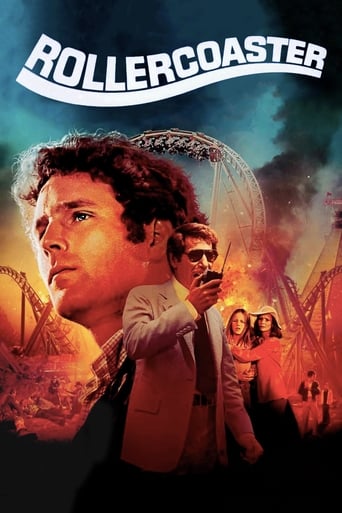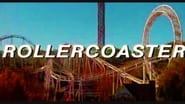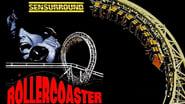Mark Turner
In the seventies a new sound system was developed in the hope of increasing attendance at movies. The system was created for Universal Studios and called Sensurround. The first film using the system was EARTHQUAKE. The system was basically four huge speakers located in the corners of the theater that would blare out lowered bass tones and sound effects at certain sequences in the film causing patrons to actually feel the sound as well as hear it. Only a few films were made this way and the new concept didn't take root. But there were several movies made using it, including Roller-coaster.An unknown protagonist (Timothy Bottoms) sneaks into an amusement park and rigs a bomb on one of their rollercoasters. Detonating it remotely the resulting wreck kills several of those on the ride at the time. Safety inspector Harry Calder (George Seagal), who had signed off shortly before this incident, is called in to investigate what happened.When another incident happens across the country Harry believes the two are connected. Discovering there is a meeting of amusement park owners taking place in Chicago he flies there to confront them. They let him know that they've been blackmailed by the bomber who says he will blow up more rollercoasters if they don't pay him $1 million.Harry connects with the FBI agent in charge of handling the blackmail case, Hoyt (Richard Widmark). Harry carries the ransom money to the park the bomber has next targeted and told to wait for a phone call at a pay phone. The bomber tells him there is a bomb set to go off, tells him where to pick up a two way radio and then sends him back and forth across the park riding various rides. Knowing what the FBI has planned to do he tells Harry to signal the drop has been made but sends him to drop it elsewhere. Afterwards Hoyt tells Harry the money was marked.The bomber calls Harry at home blaming him for the marked bills. He then tells him he will get revenge. Calder, feeling that the next attack will be launched at him personally, tells Hoyt that the most logical target will be a new coaster opening up at Magic Mountain that he signed off on. The Great American Revolution is set to open that weekend with plenty of fanfare and cameras rolling. Will this be the location? And if so will Harry be able to stop the bomber? The movie plays out as a solid detective story, a thriller that plays out well as the story progresses. The fact that Harry is a ride inspector makes his character that much more interesting as opposed to his being a regular detective. The entire film is much like its title, a movie that moves up and down and offers thrills from start to finish.Seagal was at his peak at this time and does a great job as Harry. The inclusion of Widmark as the FBI agent works well here too, a reliable face movie fans trusted at the time. Bottoms does a great job as the unhinged bomber. And in a small role as Harry's young daughter is the then unknown Helen Hunt.Extras on the DVD include the original SENSURROUND soundtrack, an interview with associate producer/writer Tommy Cook, a still gallery, radio spots and the original theatrical trailer.
deathadder-13878
A young psycho demolitions expert (Timothy Bottoms) threatens to wreak havoc at amusement parks across America until the proper authorities pay him and leave him alone. Pursuing him is a middle-aged safety inspector bureaucrat (George Segal), who's going through various mid-life crises like trying to quite smoking, visitations with his teen daughter (Helen Hunt) following a divorce, starting a new relationship, and so forth. Also along for the ride are various corporate/government/police officials who naturally often clash over how to best catch the bomber.The movie starts well enough, with Bottoms slickly planting a bomb on a roller coaster in broad daylight, then biding his time until nightfall when he remotely detonates the charge and sends derailed patrons to their doom. The photography and editing generate some good thrills, and the actors, minor and major, do their parts well.Now, with these kinds of movies, the real key is the interplay between the nominal good guys (the authorities, usually) and the bad guys. As Segal catches on to Bottoms and then has several conversations with him, it's all pretty involving. Bottoms acts very terse and businesslike, conveying the moral and emotional vacuity of a psychopath, while Segal becomes a wry and incisive analyst trying to crack a terrorist whose true motives are nearly as inscrutable as his emotions. The police think Segal a cocky amateur, but he turns out to be the better judge of criminal character.Less interesting is the bickering between aging law enforcement leader Richard Widmark and Segal. Widmark seems like a stodgy bully, outside of a few begrudging compliments to Segal. Perhaps the film-makers felt that since the psycho was in his late 20's it made it necessary to caricature the oldest character into a gruff scold, the better to pander to 70's Boomers..Segal deduces the location of the next attack, and we're left in suspense about several things. Is there a bomb? Where is it? Will they find it? Will they disarm it, before it's too late? Will they catch the perp? This isn't really a disaster movie, as it lacks the scope or spectacle. Had they wanted to, they could've upped these things with more bombings. Overall, though, the emphasis is on character interaction more than well, action. Since Segal and Bottoms make for an effective fire and ice pairing, that was the right choice to make.Why not a better rating? The movie definitely drags at times; there really isn't enough scale or plot or character depth to justify the running time. The movie wasn't a big hit, and that's probably because the marketing made it seem more epic than it is. And while the acting is good enough, only Segal and Bottoms really give something for the viewer to latch on to. A very young Helen Hunt has some presence, but her character is thankless, as are the women in Segal's life; would Dirty Harry be a better movie if the movie told us about his family? The conclusion has some things worth noting. Craig Wasson appears as an amiable "hippie boy" (that's his credit), and though he only gets about a half-dozen lines, his talent still shines through. A quasi New Wave/punk band named Sparks plays at Magic Mountain, and while their music isn't that hummable, it does have a pretty wild energy for it's time, and one particularly tensely rhythmic song bridge is used to convey the anxiety of the bomb defusing scene.
Darkweasel
When safety inspector Harry Calder (George Segal) realises an accident at a fairground is actually more than it first appears, psychopathic bomber Timothy Bottoms (whose character has no name and is only credited only as "Young Man") threatens to blow up more rollercoasters unless he's paid ONE MILLION DOLLARS and chooses Segal as the man to hand it over. Of course, thanks to the sneakiness of FBI boss Richard Widmark, the money is marked and therefore completely useless. Bottoms isn't exactly happy about this and there just happens to be a brand new roller-coaster opening in California in the next couple of days...Coming off the back of a run of classic disaster films like The Towering Inferno, The Poseidon Adventure, Airport '77, Earthquake, and of course, Jaws, 1977's Roller-coaster doesn't quite manage to reach those same heights, but it is by no means a second rate film. Bottoms is excellent as the intelligent psychopath, and Segal is perfectly cast as the grumpy, reluctant hero type, unhappy at being chosen by the killer, unhappy with the FBI, unhappy with businessmen, and unhappy at having to stop smoking. Richard Widmark is just as grumpy as Segal, Susan Strasberg and Henry Fonda don't get to do much, but the film does see the first big screen appearance of Helen Hunt as Segal's teenage daughter.The tension in the build up to the first roller-coaster crash is very similar in style to Jaws, and just as effective until the actual crash. As good as that whole scene is, the impact is lessened because you can clearly see the cars are filled with wobbly shop dummies. The ending suffers the same way, the tension being built nicely as Bottoms plants a second bomb on the roller-coaster itself, but the grand denouement is again hampered by another strategically clothed shop dummy. Overall though, a very enjoyable slice of '70s disaster.
Michael_Elliott
Roller-coaster (1977) ** (out of 4) The disaster genre was certainly running on fumes by the time this thing struck but I'd say this has a lot more in common with JAWS. A nut case (Timothy Bottoms) blows up a roller coaster ride and then blackmails the park owners for a million dollars. He forces a inspector (George Segal) to go along with the ride but after a detective (Richard Widmark) double crosses him, the psychopath picks out another park to blow up. There's barely enough plot here to fill up a TV episode so stretching it out to two-hours was just crazy because after the first deadly ride nothing happens for the rest of the film. A lot of the problem is due to the screenplay but director Goldstone doesn't do the film much justice either as there's no suspense ever built up, which is the same thing that happened to the director's next film, the real disaster WHEN TIME RAN OUT. Back to this film, I'm really not sure what they were thinking making this thing so long unless there was some unwritten rule that any disaster film had to run extra long. At the start of the film it seemed like the screenwriters were going to do something smart and that is do a JAWS on us. In that film, they gave us something everyone like (water) and made us scared of it. This film starts off by showing why people love roller coasters but then it tries to make us scared by showing bodies being broken apart after the first accident. This is all good but then the movie continues and it just goes downhill. There's really not much you can do with a plot like this because rides are either going to blow up or they're not. Here, they don't. We get a long cat and mouse game at an amusement park as Bottoms has Segal walking all over the place to try and get away from the police. This sequence feels close to an hour and not one second of it contains any suspense. The film tacks on an extra ending with the possibility of another bomb being on yet another ride but again we get no suspense. By the time the final act comes along I was struggling to stay away. The one thing the film does offer are some fun performances with Segal doing a very good job in the lead. The screenplay doesn't offer him too much development but the actor keeps thing alive with the fun performance. Widmark is also pretty good in his role and gets to play off that classic attitude in a few nice scenes. Bottoms isn't the greatest villain in history but his calm attitude works. Henry Fonda is kind enough to show and pick up a paycheck. Look quick for Helen Hunt and Steve Guttenberg. One could debate the importance of the 70s disaster flicks but there's no doubt that as the decade went along they got a lot worse. This one here isn't as bad as THE SWARM or WHEN TIME RAN OUT but at the same time there's not enough here to make it worth wasting two hours of your life.










